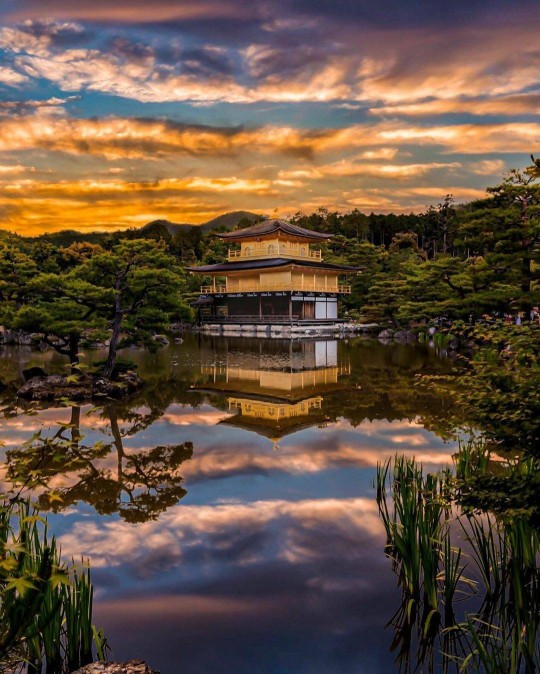#the golden pavilion (kinkaku)
Text

#netego#dai nippon gothic#dainippongothic#kinkaku ji#yukio mishima#tempelbrand#金閣寺#kinkakuji#the golden pavilion
32 notes
·
View notes
Text

#Kinkaku-ji#Rokuon-ji#Golden Pavilion#bonsai#Zen Temple#buddhist#Buddhist temple#Kyoto#Kyoto travel#Japan#Japan travel
26 notes
·
View notes
Text
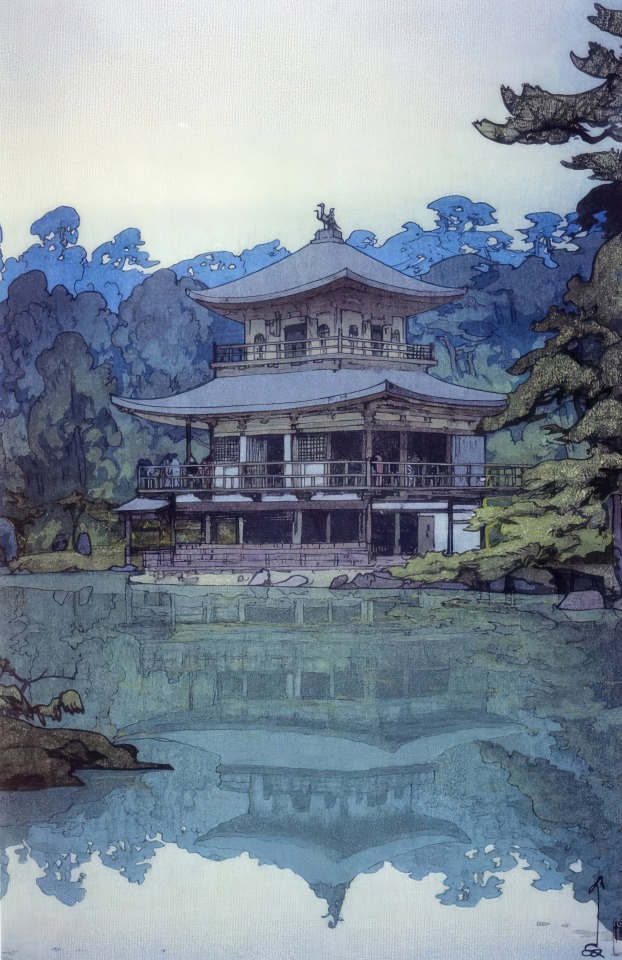
El pabellón de oro (Hiroshi Yoshida, 1933)
#art#20th century art#20th century painting#1900s#hitoshi karasawa#🇯🇵#金閣寺#the golden pavilion (kinkaku)#1933
35 notes
·
View notes
Photo

Kinkakuji
Kyoto, Japan
#kinkakuji#kinkaku-ji#golden pavilion#kyoto#japan#asia#travel#travelling#architecture#gold#my photos
18 notes
·
View notes
Text
"Julgo desnecessário dizer o quanto a gaguice constituía um obstáculo que se interpunha entre mim e o mundo exterior. O problema todo estava no primeiro som a ser articulado, pois essa era a chave que abria a porta entre meu mundo interior e o mundo exterior. Essa chave nunca cumpria direito sua função. Pessoas normais conseguem fazer uso das palavras com desenvoltura e, assim, podem deixar sempre escancarada a porta entre o mundo interior delas e o mundo exterior, proporcionando uma livre circulação de ar entre esses dois mundos. Isso, no entanto, me era impossível. A chave da minha porta se achava irremediavelmente emperrada na fechadura."
O Pavilhão Dourado, Yukio Mishima, 1956
0 notes
Text



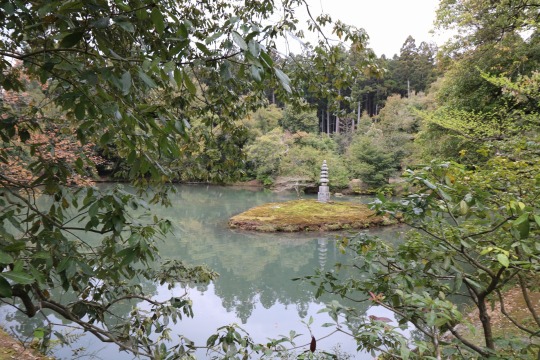
0 notes
Text
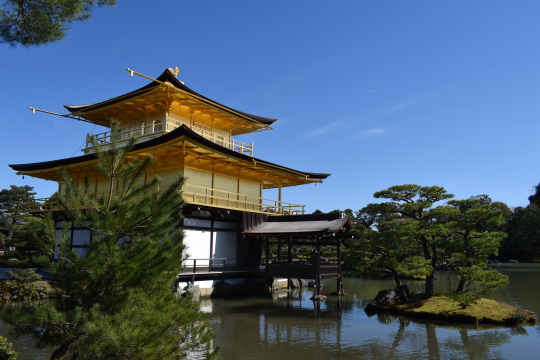
Kinkaku-ji: Temple of the Golden Pavilion.
Kyoto, Japan.
44 notes
·
View notes
Photo
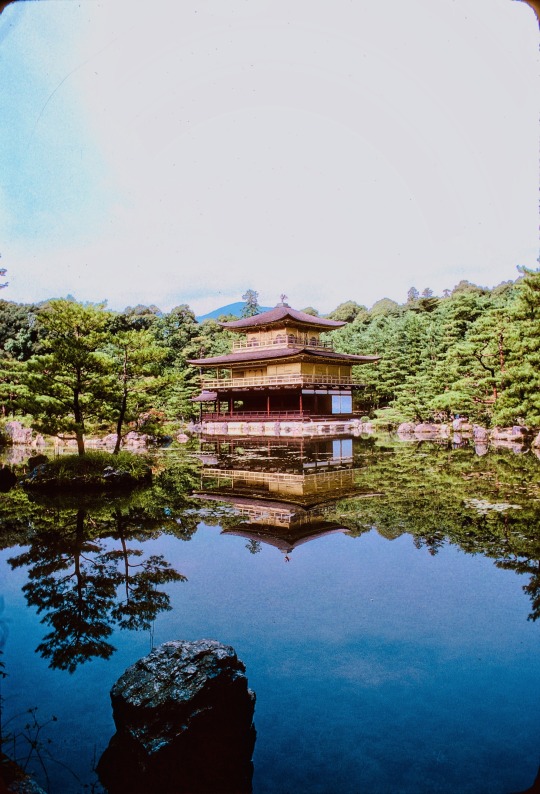
Kinkaku-ji, the Golden Pavilion
Inspired by video from @shinjiaratani. Thank you for the memories, almost 60 years ago when I visited Kyoto.
157 notes
·
View notes
Text
My Trip to Japan! ⛩️ Part 3
16.12
We had breakfast as soon as service started at 6:30, and then went to take the Shinkansen to Kyoto. The trip lasted just under an hour, and we arrived at 8:30. It was an adventure to get out. It would take us a day and a half to figure out the right way to move around the gigantic Kyoto station without getting trapped like a rat in a maze. We left the suitcases at the hotel, conveniently located just opposite the station, and went straight to Kinkaku-ji, the temple of the Golden Pavillion. The titlepavillion is one of several that make up the temple, though none as spectacular. The gardens were a delight. We had matcha tea at the temple's tea house, with a very tasty sweet bearing the pavillion’s outline and a touch of gold leaf.
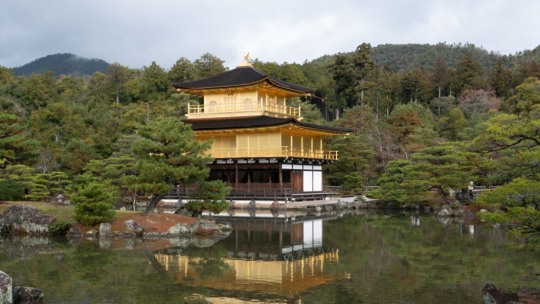
We continued to the next temple, Ryō-An-ji. I liked this one a lot; it has a large stone Zen garden that invites contemplation... until the school outing arrives and misaligns all your chakras. On the way out, I bought a beautiful maiko doll for my niece, and we had a butaman, a very fluffy bread ball filled with pork. Very tasty.
Next on the itinerary was Ninna-ji, with an impressive monumental gate and a cherry blossom promenade that must be a dream during hanami season. Ninna-ji is an extensive complex, with many pavilions and a five-story pagoda. It was already 1 pm so we took a cute vintage train to Arashiyama, where we had some delicious sobaforlunch, looked at shops, and peeked at the Katsura River before attacking the fourth temple of the day, UNESCO World Heritage Site like the other 3: Tenryū-ji. This was the one that caught my attention the least (or maybe I was already saturated), but next to it ther’s the bamboo forest. You don't enter the forest proper, which is fenced, but walk through a pathway opened between the canes. Still, the height, greenery, and coverage of the bamboo canopy are impressive. You could hear the crackling of the canes hitting each other.
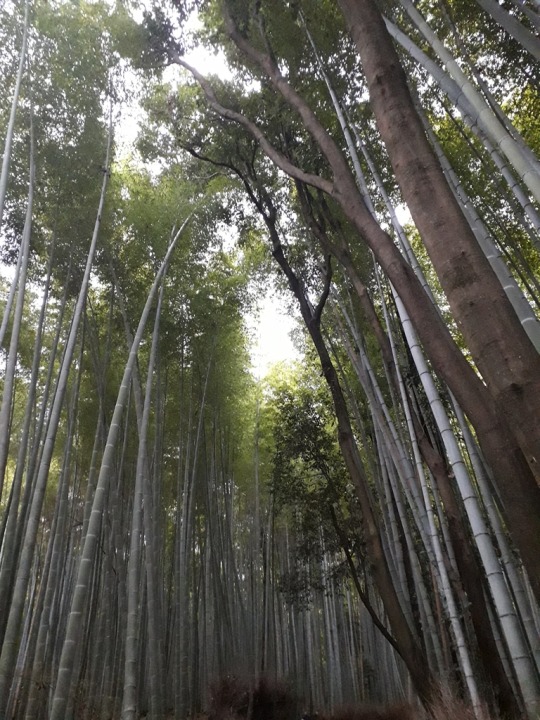
On the way back to the train, we happened to pass by a Shinto shrine in the middle of the bamboo forest, Nonomiya jinja, beautiful in its simplicity. Imperial princesses came here to purify themselves for at least a year before going to the Ise Shrine to ervve there on behalf of the emperor. Even if the custom ended in the 14th century, Nonomiya shrine still enjoys the favor of the imperial family.
In the evening we strolled a bit through the picturesque Gion district at night, had dinner, and went to bed for the next early rising.
17.12.
We got up at six sharp to go to the world-famous Fushimi Inari-taisha, the “shrine of the thousand torii” (ritual gates). We missed the train we wanted to take, lost in the mega-station, but we still arrived in time to start well before the hordes of visitors arrived. Even before entering, I witnessed something that gave a hint of how special this place is: while we were have breakfast in front of the konbini opposite the main entrance, a taxi stopped, the driver got out, prayed facing the temple right there on the tarmac, and continued his route.

The shrine was founded in the 8th century, dedicated, like the mountain where it sits, to Inari, the Shinto deity of rice, agriculture, and business, whose messenger animal is the fox. Therefore, fox-shaped statuettes are omnipresent on the altars spread all about the mountain. We went in, toured the different halls, and started the climb up Mount Inari along the torii-lined path. These gates are erected as votive offerings; the large ones, like the ones along the path, can cost as much as a luxury car, so they usually come from companies, but many minor shrines hold small, smaller, tiny, keychain-sized torii gates. Throughout the mountain, there are literally thousands of shrines: new and old, luxurious or very humble, alone or in groups, next to the path or hidden in the forest, pristine or claimed by nature.


Regardless of each person’s beliefs, Fushimi Inari has more than earned its sacred mountain status. Its atmosphere is tremendously spiritual. Even as I write this I get emotional, as I recall the overwhelming feeling that gripped me most of the way, despite the growing number of people appearing as the day progressed.
After leaving the shrine, we ate some takoyaki on the go and went to the center, to Nishiki Market, a covered street with very nice shops, especially food ones. I stopped at one which had all kinds of beautiful things, had my loot, and when I got to the cash point, the old lady took all her time to perfectly wrap the humble set of Hina dolls that I had bought. Position, bag, box, bag… I legit felt like Alan Rickman in Love Actually when Mr. Bean wraps the gift for his lover. Three times I told her she didn’t need to peel the price tags, as everything was for myself. Forget it, the price tag must go. We ate some more takoyaki to complete lunch at a place that only sells that. The basic ones were ¥280 (€1.90) for 6. In Europe, they charge you €5 for 4 balls. After eating, we went to Ginkaku-ji, the Silver Pavilion, with beautiful gardens and not as crowded as the golden one (spoiler: it's not covered in silver. That was the idea, but it never materialized).
We went down a little street that borders a canal called "The Philosopher's Path". A very bucolic and pleasant stroll, with a lot of green, traditional houses and hardly any shops, just art galleries or craft workshops. The last temple of the day was Eikan-do. Larger than we anticipated, it’s set within lush gardens and is beautiful: its many pavillions include a pagoda and a curved staircase nicknamed "sleeping dragon." Next to these stairs stands the three-needle pine, whose needles grow in groups of three, not two. It’s said to symbolize the virtues of wisdom, mercy, and sincerity. And that if you get a pine needle like that, you will be blessed with all three. Unfortunately, with everything being so clean, there was none within my reach.

⬆️ I haven't talked much about shopping so far, because the truth is there was hardly any AoT merchandise anywhere. These on the picture above are the only items they had at the Kyoto Animate store: One (1) chibi Levi clearfile; random manga volumes; One (1) Ereh acrylic stand and One (1) Levi one but it was teen Levi, not looking hot; and a "surprise" box with some chibi stuff but I'm certainly NOT spending 880¥ in a surprise. That's it. Neither Donki nor the discount place opposite had jackshit.
We had dinner on the 11th floor of the train station. Kyoto Station's building is a monster of engineering; the north hall rises ten floors above street level and includes a monumental staircase with LED colors on the risers that play with lights and even reproduce entire videos in full color (we saw the trailer for the latest Disney movie); on that side, there’s a huge department store, of which the last two floors are food courts: the 10th floor is only ramen restaurants, and the 11th floor has a bit of everything. We had beef tongue, a favourite of mine. After dinner, we went to the Sky Gallery, a walkway emerging from the 10th floor, with panoramic views of the station and the city.
18.12.
We woke up early and had breakfast at the hotel buffet, supposedly "western style," which turned out to be a hit-and-miss, not so much because of the Japanese version of what you can find at a buffet in Europe or the US, but because many of those dishes were cold, when they’re eaten warm in the West.
We started the day at Kiyomizu-dera, very spacious, with a clarity inside the temple that I hadn't seen in other Buddhist shrines. The impressive views over the city from its balcony supported by a structure of 13-meter-high wooden pillars are noteworthy. We walked down, looking at shops in Gion (there was a Ghibli shop here too!) and then we looked for an early lunch, as we had booked a kimono tea ceremony at one.
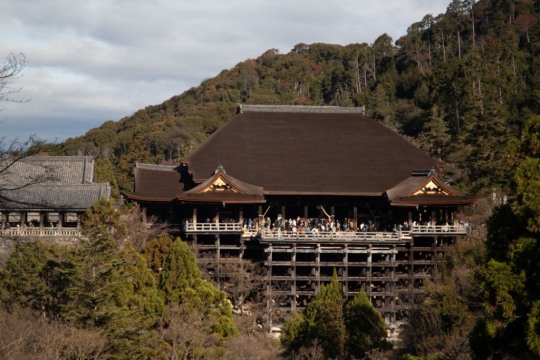
The buildig where the tea house operates is a registered cultural property. They dressed me in a kimono for me: an underrobe, tied with a ribbon (which straightens your back), the kimono itself, tied wit another ribbon, a plate to hold the obi (sash) in place, and the obi. They did my hair, and I proceeded to the salon, where Husband was already waiting for me looking like a full-fledged samurai. We were in a group of 8: us, an Australian couple about our age, and an Asian-American family of dad, mom, and two teenage children. Luckily, everyone was motivated and respectful of the place and the ritual.


After the hostess showed the entire process, she taught us how to whisk the matcha, and we enjoyed our tea (the traditional way is that everyone takes turns drinking from the same cup, but since the pandemic, each one gets their own bowl). Previously, we tasted sweets. One of them was a kind of dumpling filled with anko that blew my mind. It's called yatsuhashi and is a Kyoto specialty. The hostess wrote the name on a piece of paper for me and everything, but... My joy was short-lived, as when I went to buy it, the expiration date was quite short, so I could only got a small package to eat as soon as we returned home. Once the ceremony was over, we took photos at will in the house garden before returning the kimono.
In the afternoon we went to Nijo Castle, with impressive paintings on the door panels and exquisite marquetry on the lintels and ceilings. The historical significance of this castle is enormous, as it was the place wher the Tokugawa shogunate, better known as the Edo era, both began and ended. After the castle and more walking around the city centre, we had dinner and dragged ourselves back to the hotel, exhausted, and prepared everything to go to Nara the next day.
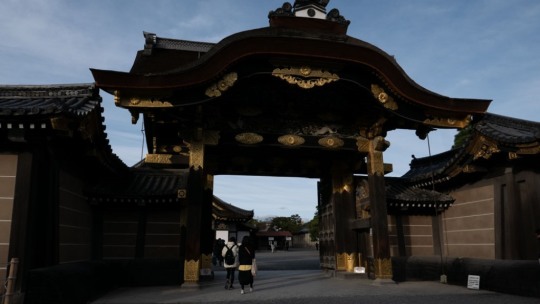
8 notes
·
View notes
Text
Kyoto Travel Guide: Unveiling the Timeless Charms of Japan's Cultural Heart

Kyoto, a city steeped in history and cultural richness, beckons travelers from around the world to embark on a captivating journey through time. Nestled amidst lush mountains and picturesque landscapes, Kyoto preserves the essence of traditional Japan like no other city. With its awe-inspiring temples, enchanting gardens, and captivating geisha culture, Kyoto offers a truly immersive experience that unveils the country's profound cultural heritage. Join us as we explore the must-visit destinations and hidden gems of this extraordinary city.
Timeless Temples and Spiritual Splendor

Kyoto boasts a wealth of ancient temples, each with its own unique allure. The iconic Kinkaku-ji (Golden Pavilion) dazzles with its shimmering gold exterior reflected in the surrounding pond, while the serene Kiyomizu-dera Temple offers breathtaking panoramic views of the city from its wooden terrace. Visit the tranquil Ryoan-ji Temple and contemplate the minimalist beauty of its famous Zen rock garden. Explore the exquisite gardens and vibrant red torii gates of Fushimi Inari Taisha, an emblematic Shinto shrine.
Traditional Neighborhoods and Geisha Culture
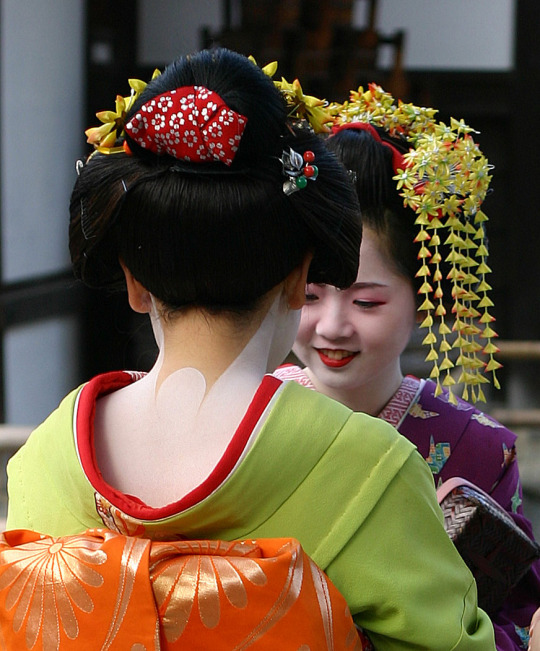
Wander through Kyoto's atmospheric traditional neighborhoods, such as Gion and Pontocho, where the spirit of old Japan thrives. Keep an eye out for elegantly dressed geisha or apprentice geisha known as maiko gracefully gliding along the streets. Immerse yourself in the enchanting world of tea ceremonies, traditional music, and dance performances. Visit the Gion Corner for an insightful cultural show or indulge in a memorable meal at a traditional ryotei (Japanese restaurant).
Enchanting Gardens and Tranquil Retreats

Kyoto's meticulously designed gardens offer a peaceful escape from the bustling city. Explore the sublime beauty of the Arashiyama Bamboo Grove, where towering bamboo stalks create a mesmerizing atmosphere. Stroll through the stunning gardens of Katsura Imperial Villa or experience the harmony of nature at the exquisite Saiho-ji Temple, also known as the Moss Temple. Admire the seasonal beauty of cherry blossoms in Maruyama Park or the vibrant hues of maple leaves in the autumn foliage.
Cultural Heritage and Museums

Delve deeper into Kyoto's cultural heritage by visiting its fascinating museums and art galleries. The Kyoto National Museum houses an extensive collection of Japanese art and artifacts, including exquisite Buddhist sculptures and delicate ceramics. Gain insight into traditional Japanese craftsmanship at the Kyoto Museum of Traditional Crafts or explore the intriguing history of manga at the Kyoto International Manga Museum. Discover the captivating world of Noh theater at the Kanze Noh Theater or witness a mesmerizing Kabuki performance at the Minamiza Theatre.
Delightful Culinary Experiences

Kyoto's culinary scene is a feast for the senses, offering a diverse array of traditional delicacies. Indulge in kaiseki, a multi-course fine dining experience that showcases the essence of Kyoto's seasonal ingredients. Savor the exquisite flavors of matcha (powdered green tea) and wagashi (traditional Japanese sweets) at a traditional tea house. Explore Nishiki Market and sample an array of local delicacies, from fresh seafood to delectable street food. Don't forget to try Kyoto's famous yudofu (tofu hot pot) for a truly authentic taste of the city.
youtube
Kyoto, with its timeless temples, captivating geisha culture, serene gardens, and rich cultural heritage, offers an unforgettable journey into the heart of Japan's traditions. Whether you're exploring ancient temples, immersing yourself in the vibrant streets of Gion, or savoring the delicate flavors of Kyoto's cuisine, the city's essence will envelop you in its enchantment. So, embrace the spirit of Kyoto and allow yourself to be transported to a world where past and present harmoniously converge, leaving you with cherished memories that will last a lifetime.
#cheap tickets#tourism#flight tickets#travel stories#traveling#cheap travel#travel tips#cheap flights#travel#youtube#japan#Youtube
13 notes
·
View notes
Text
The Birth of Ashikaga Yoshimasa
From the book 日本の歴史366, 1436年1月20日 (永享8年) marks the birth of the 8th Muromachi Shogun, Ashikaga Yoshimasa. He was integral in creating the Higashiyama Culture during the Muromachi Period, and he spread the arts of tea ceremony and built Kinkaku-ji.
幕府 ばくふ bakufu, shogunate
第8代 だいはちだい eighth generation
金閣 きんかく golden pavilion
銀閣 ぎんかく silver pavilion
きわめる to carry to extremes; to master
東山文化 ひがしやまぶんか Higashiyama Culture, created by shogun Ashikaga Yoshimasa during the Higashiyama cultural and artistic period (東山時代) in the mid-Muromachi Period
完成 かんせい completion, complete
死後 しご after death
祈る いのる to pray, to wish
将軍 しょうぐん shogun
尊敬する そんけいする to respect, to esteem
風流 ふうりゅう elegance, taste, refinement
応仁・文明の乱 おうにん・ぶんめいのらん the Ōnin War or the Ōnin-Bunmei War, a civil war that occurred during the Muromachi Period
なかなかの excellent, wonderful, very good
初代 しょだい first generation, founder
#日本の歴史366#1月2日#the birth of ashikaga yoshimasa#単語#語彙#japanese vocabulary#日本語#japanese#japanese language#japanese langblr#japanese studyblr#langblr#studyblr#tokidokitokyo#tdtstudy
26 notes
·
View notes
Text
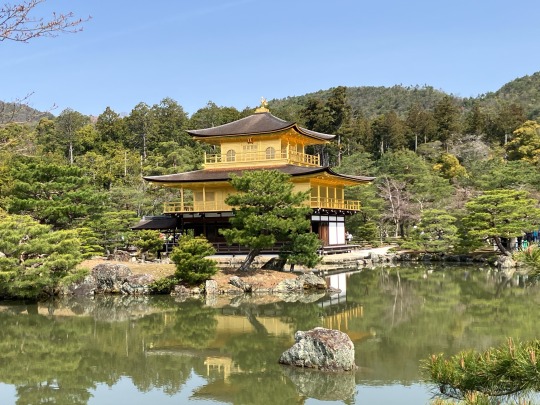
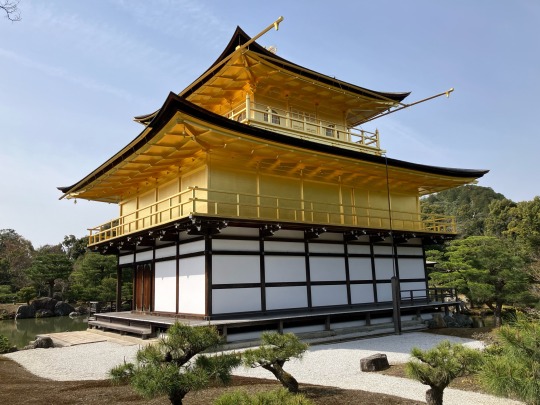
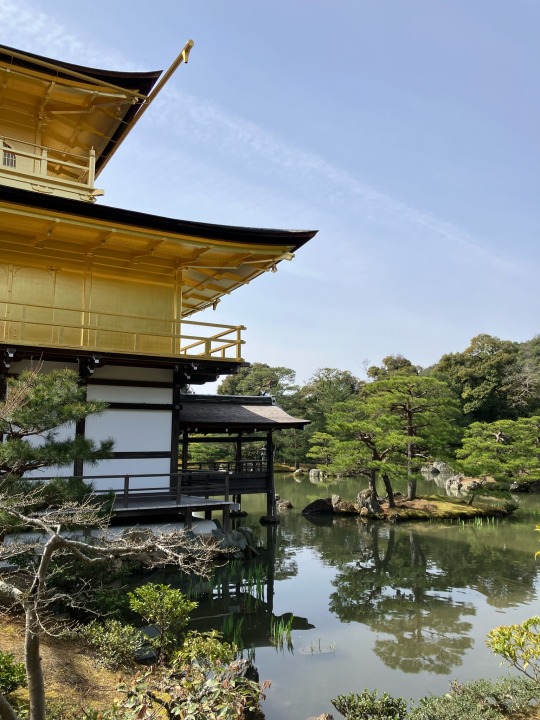
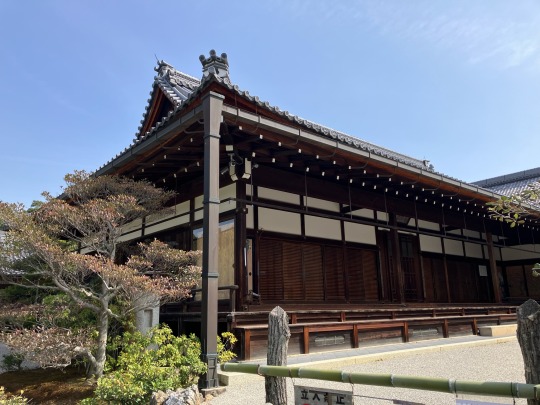
Kinkaku-ji, the iconic Temple of the Golden Pavilion, in Kyoto, Japan. Not pictured: the swarms of tourists (myself included!) circling the perfectly-maintained gardens.
6 notes
·
View notes
Text

#Kinkaku-ji#Rokuon-ji#Golden Pavilion#Zen Temple#Kyoto#buddhist#Buddhist temple#Japan#kyoto travel#Japan travel
18 notes
·
View notes
Text
youtube
Japan is a country with a rich cultural heritage, stunning natural landscapes, and a blend of modern and traditional elements. Whether you're interested in exploring historical temples, enjoying the beauty of cherry blossoms, or experiencing cutting-edge technology in bustling cities, Japan has something for everyone. Here's a guide to help you plan your visit to Japan:
1. Tokyo:
Asakusa: Visit Senso-ji Temple and Nakamise Shopping Street.
Shibuya Crossing: Experience the iconic pedestrian scramble.
Akihabara: Explore the electronics and anime district.
Tsukiji Outer Market: Try fresh sushi and seafood.
2. Kyoto:
Fushimi Inari Shrine: Walk through thousands of red torii gates.
Kinkaku-ji (Golden Pavilion): Admire the stunning Zen Buddhist temple.
Arashiyama: Explore the bamboo groves and visit the Iwatayama Monkey Park.
3. Osaka:
Osaka Castle: Visit this historic castle surrounded by a beautiful park.
Dotonbori: Experience vibrant nightlife and try local street food.
Universal Studios Japan: Enjoy the theme park attractions.
4. Hiroshima:
Peace Memorial Park: Reflect on the city's history and visit the Atomic Bomb Dome.
Miyajima Island: Explore the iconic "floating" torii gate at Itsukushima Shrine.
5. Nara:
Nara Park: Interact with friendly deer and visit Todai-ji Temple.
Kasuga Taisha Shrine: Explore the lantern-lined paths.
6. Hokkaido:
Sapporo: Enjoy winter sports, the Snow Festival, and delicious local cuisine.
Shikisai-no-Oka Flower Fields: Visit colorful flower fields in Biei.
7. Kanazawa:
Kenrokuen Garden: Experience one of Japan's three most beautiful landscape gardens.
Higashi Chaya District: Wander through well-preserved geisha districts.
8. Mount Fuji:
Chureito Pagoda: Capture stunning views of Mount Fuji.
Lake Kawaguchi: Enjoy the scenery around this picturesque lake.
9. Okinawa:
Shurijo Castle: Explore the reconstructed castle in Naha.
Okinawa Churaumi Aquarium: Visit one of the largest aquariums in the world.
10. Japanese Onsen (Hot Springs):
Experience the relaxation of traditional hot springs, such as those in Hakone or Beppu.
11. Japanese Gardens:
Visit traditional Japanese gardens like Ritsurin Koen in Takamatsu or Korakuen in Okayama.
12. Cherry Blossom Season:
Plan your visit during spring (late March to early April) to witness the breathtaking cherry blossoms.
13. Traditional Tea Ceremony:
Experience a traditional Japanese tea ceremony for a glimpse into Japanese culture.
14. Sumo Wrestling:
Attend a sumo wrestling match or visit a sumo training stable.
15. Japanese Cuisine:
Try sushi, ramen, tempura, kaiseki (multi-course meal), and other local specialties.
Tips:
Transportation: Utilize Japan's efficient and punctual public transportation, including the Shinkansen (bullet train).
Cash: While credit cards are accepted in urban areas, it's advisable to have some cash, especially in rural regions.
Language: English may not be widely spoken, so learning a few basic Japanese phrases can be helpful.
Japan offers a unique blend of tradition and innovation, and each region has its own distinct charm. Whether you're interested in history, nature, or modern city life, Japan provides a diverse range of experiences. Enjoy your travels in the Land of the Rising Sun!
#japan#japon#JapanTravel#ExploreJapan#JapanAdventures#VisitJapan#PhotographyJapan#JapanLovers#JapanVibes#JapanNature#JapanCulture#JapanExperience#JapanTrip#DiscoverJapan#JapanHoliday#JapanDreams#JapanWanderlust#JapanBeautiful#JapanViews#JapanLandscapes#JapanCityLife#JapanMemories#Youtube
3 notes
·
View notes
Text
Best Time to Visit in Japan to See the Seasonal Attractions
Japan is a stunning place to visit all year round; the seasonal attractions are most enjoyable during particular periods of the year. The ideal times to visit Japan to experience each season are broken out here:
Enjoy the reading:
Spring (March-May)
Japan is a popular travel destination in the spring when cherry blossoms abound. The duration of the cherry blossom season varies based on the locale, although it usually lasts for two weeks. Tokyo, Kyoto, and Osaka are a few of the greatest locations in Japan to view cherry blossoms.
Other seasonal attractions that you might take advantage of are:
Shibazakura, also known as moss phlox, are pink and white flowers that bloom in patterns resembling carpets. Japan's top locations to view Shibazakura are Hitachi Seaside Park and Fuji Five Lakes.
Nezumisha, also known as rattail grass, is a kind of grass that, in the spring, takes on a silvery white hue. Japan's top locations for nezumiha viewing are Enoshima Island and Mihama Beach.
Summer (June-August)
In Japan, summer is a hot and muggy season, but it's also a time for lots of festivals and festivities. In Japan, the Gion Matsuri in Kyoto and the Kanda Matsuri in Tokyo are two of the most well-known summer festivities.
Summertime in Japan is a great time to visit for various outdoor activities, including swimming, bicycling, and hiking, in addition to festivals. The Okinawa beaches and the Japanese Alps are two of the top locations in Japan for summertime outdoor sports.
Autumn (September-November)
Fall is another well-liked season to go to Japan because of the changing foliage, which turns the nation's landscape into a vibrant mosaic of red, orange, and yellow. The duration of the fall foliage season varies based on the location, although it usually lasts for two months. The Kinkaku-ji (Golden Pavilion) in Kyoto and Nikko National Park are two of the greatest locations in Japan to view fall foliage.
You may take advantage of additional seasonal attractions like:
Fall festivals, or matsuri, are celebrated across Japan. Two notable ones are the Jidai Matsuri and the Takayama Matsuri.
Hot springs, or onsen, In Japan, onsen is a well-liked means of rest and renewal. The chilly autumn months are the best time to visit. Hakone and Kusatsu boast some of Japan's top onsen.
Winter (December-February)
In Japan, winter is a chilly and snowy season, but it's also a time for many winter sports and pastimes. In Japan, snowboarding and skiing are two of the most popular winter activities. Hakuba Valley and Niseko are two of the greatest locations in Japan for winter sports enthusiasts.
You can enjoy other seasonal attractions, such as:
Illuminations: Throughout the winter, a lot of Japanese towns and cities have lighting festivals. The Osaka Hikari Renaissance and the Caretta Shiodome lighting in Tokyo are two of the most well-liked lighting events in Japan.
Snow festivals: During the winter, Japan has several snow festivals, such as the Yokote Kamakura Festival and the Sapporo Snow Festival.
Conclusion
In the end, we can say that the country has a lot to offer everyone, from its dynamic cities and welcoming populace to its breathtaking terrain and rich cultural heritage. Looking for the best Japan tourists spots? You can connect with us here, and you will get the best guide.
#places to visit in Japan#Japan itinerary#holidays to Japan#Japan tourism#Japan travel#Japan tourists spots
2 notes
·
View notes
